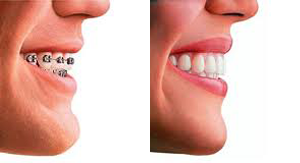
SUV Dental Service
Orthodontics is the first specialty of dentistry that is concerned with the study and treatment of malocclusions (improper bites), which may be a result of tooth irregularity, disproportionate jaw relationships, or both. Orthodontic treatment can focus on dental displacement only, or can deal with the control and modification of facial growth. In the latter case it is better defined as “dentofacial orthopaedics”. Orthodontic treatment can be carried out for purely aesthetic reasons with regards to improving the general appearance of patients’ teeth.
How to Evaluate Orthodontic Patient?
If you are a candidate for orthodontics, you will likely be referred by your general dentist to an orthodontist for evaluation of your bite. During your first orthodontic visit, your orthodontist may use several methods to develop an individualized treatment plan, including:
- Oral, facial and functional evaluation (examination).
- Intraoral and facial photographs.
- Panoramic and cephalometric X-rays.
- Impressions for models of the teeth and bite.
An orthodontist reviews your dental records, performs a clinical assessment, takes X-rays of your mouth and head and makes models of the teeth by creating an accurate impression of them. The results of this evaluation are studied in order to formulate the best orthodontic treatment plan.
Typically during the second visit, your orthodontist reviews the treatment plan and estimates the number of months for the active phase of treatment. The standard treatment phase is two years. Following treatment, you may be required to wear a retainer for a period of time.
The duration of orthodontic treatment varies based on your age, the extensiveness of the procedure (some people require more work than others) and how closely you follow your treatment plan. For example, younger patients may respond more quickly to treatment than older patients because the bones supporting young teeth are more pliable than those supporting older teeth. However, adults tend to follow treatment instructions more consistently than pre-teens.
In some cases the treatment time is longer. For example, oral surgery and recovery may be needed before or during orthodontic treatment.
Conditions Treated with Invisible Braces
While invisible braces may not be suitable for certain misalignment cases or the complex bite problems that are better addressed by traditional orthodontics, invisible braces can be used to treat the following orthodontic conditions:
- Overbite or overjet
- Crowded or widely spaced teeth
- Crooked teeth
Invisible braces are designed for adults and older teenagers; invisible braces are not recommended when baby teeth remain. Children and younger teenagers faced with orthodontic problems will require traditional metal braces with brackets/wires on the front of the teeth.
However, only your dentist or orthodontist can determine if you are a candidate for invisible braces. The clear aligner treatment was designed primarily for adults due to the need for absolute and rigid cooperation; the trays are worn 22 hours per day and should not be forgotten or lost.
INVISALIGN® –An invisible-removable aligner for your teeth
Straight teeth and a revitalized smile may no longer need to come from a mouth full of unattractive wire and bracket braces. Enhancing self-esteem and physical confidence, invisible braces offer an esthetic and barely visible alternative to conventional wire/bracket braces. The clear aligners (also called clear braces) are manufactured using advanced computer technology that predicts tooth movement, making it possible for the removable orthodontic appliance to gradually straighten teeth.
Hygienic benefit. It’s removable for good hygiene. You can brush and floss normally, which can help you prevent tooth decay and gum disease. Some orthodontic appliances, like braces, can cause gingivitis (usually reversible once the braces are removed.
Your gum health may improve. Research has shown that periodontal tissue health may improve with use of Invisalign Aligners during your orthodontic treatment.
You can still eat what you want. Because the aligners are removable, you don’t have to worry about what you eat. Cleanings are quicker and easier than with traditional orthodontics.
Straighter teeth can lead to:
Healthier Gums. Properly positioned teeth are easier to brush and floss than teeth that are crooked or spaced too far apart. Properly aligned teeth can help gums “fit” tighter around them, which may lead to better periodontal health.
Easier Cleanings. With maintenance of good oral hygiene, the chances of having plaque retention, tooth decay, and periodontal (gum) disease can be reduced.
Improved Chewing and Speech. In some instances, speech problems may result from poorly positioned teeth and jaws. Correction of the bite can help improve chewing and speech.
Decreased Risk of Dental Trauma and Abnormal Wear. Properly aligned teeth are less stressful on the supporting bone and jaw joints.
More beautiful Smiles. Straightening your teeth with Invisalign will make you feel less self-conscious and more confident.
Length of Treatment
The length of treatment depends on your situation and the type of invisible braces you are wearing. Typically, braces are worn from 18 to 24 months, though they are sometimes worn longer.
Metal braces work the best because they are made from the strongest materials. Ceramic braces, while strong and better looking, often take more time because they are not as strong as metal braces. Inside braces also can take more time to work effectively.
The treatment times with clear aligners vary. For example, Invisalign treatment, typically requiring 20 to 30 aligners for the upper and lower teeth, usually averages nine to 15 months to complete.
Frequently Asked Questions about INVISALIGN ® Treatment
Q. Are the Invisalign braces (removable aligners) really invisible?
A. Yes, even when very close, no one will know you are wearing anything on your teeth – they are truly invisible braces.
Q. How often do I change to a new Invisalign aligner?
A. About every two weeks, you change to a new Invisalign aligner, but your office visits will be only about every 8 to 12 weeks.
Q. How long does the Invisalign braces system take to move the teeth?
A. Depending on difficulty, most Invisalign treatment will take between 9 and 18 months, but some Invisalign treatments could take less or more time.
Q. Do Invisalign braces cost more than regular braces?
A. Invisalign treatment does cost about 25% more, but with our payment plans, treatment is still very affordable.
Q. These Invisalign invisible braces (aligners) seem to be plastic, why should they cost more?
A. All of the Invisalign aligners are made with in a laboratory using the latest computer CAD CAM design. This does add specific lab costs to treatment that are not required with standard braces. (Lab costs are included in your total fee.)
Q. Is the Invisalign treatment just for adults?
A. A patient must have all of their adult teeth and must be responsible enough to keep their invisible Invisalign braces in place at all times except eating.
Q. Can Invisalign treat all of the problems that braces can?
A. Although it cannot treat every orthodontic situation, many common issues such as crooked teeth or crowded teeth, spaces between teeth, and certain overbite types can be successfully corrected with Invisalign.
Q. If I have insurance, will it pay for Invisalign braces?
A. Yes, dental insurance plans accept the Invisalign treatment.
